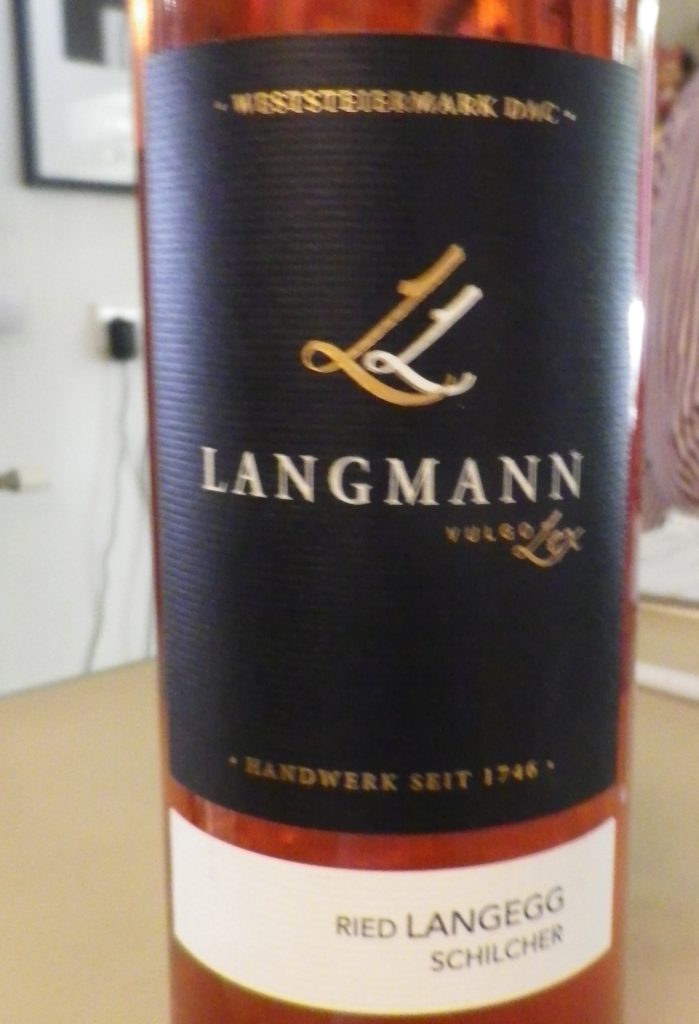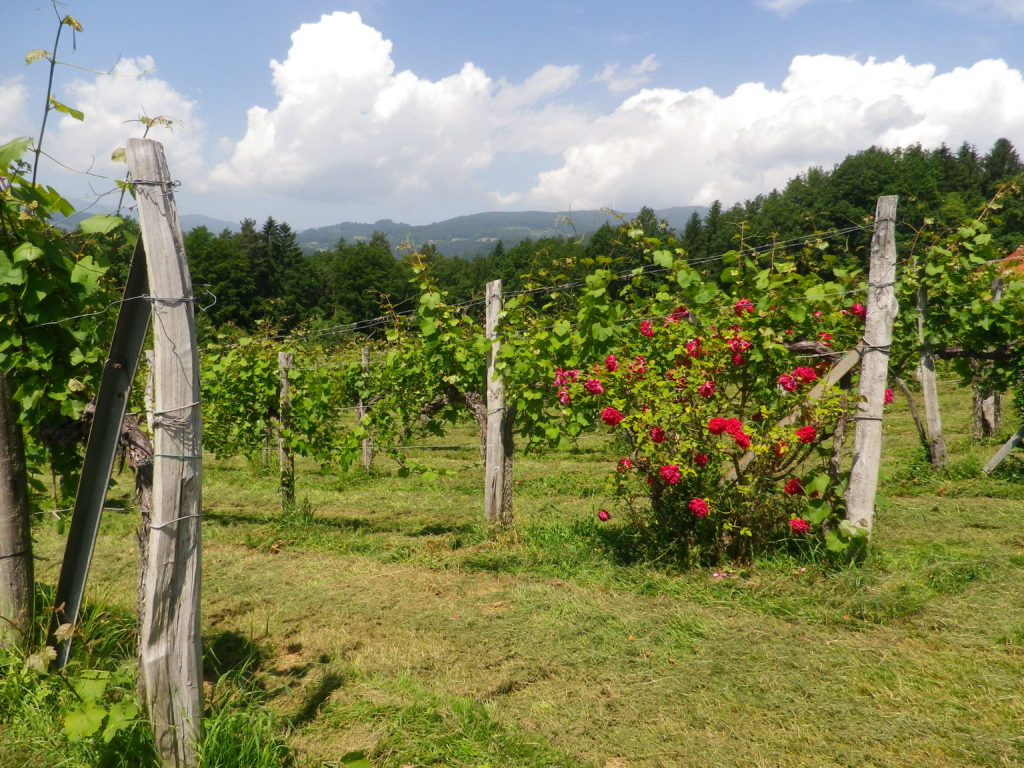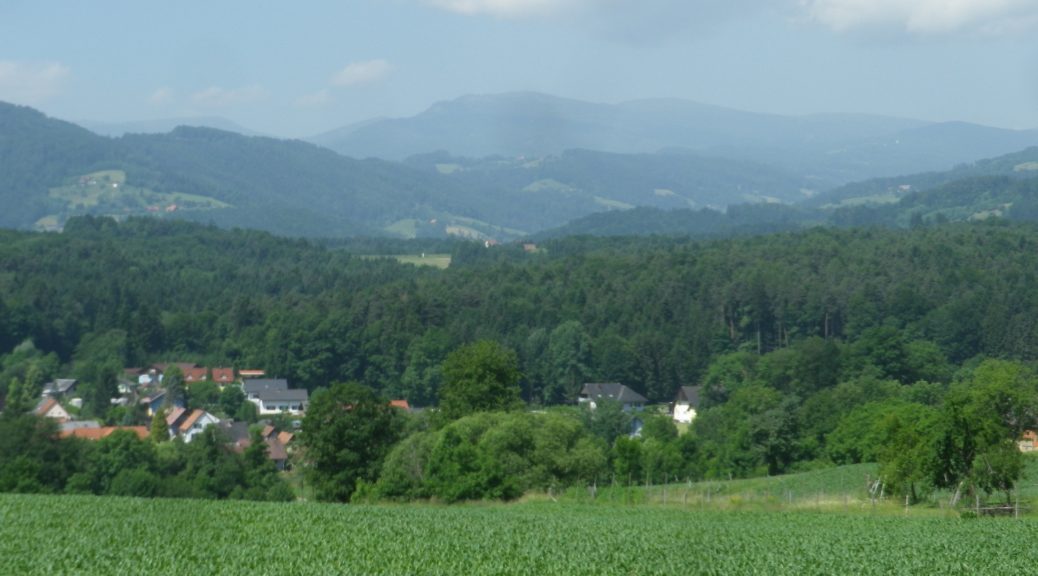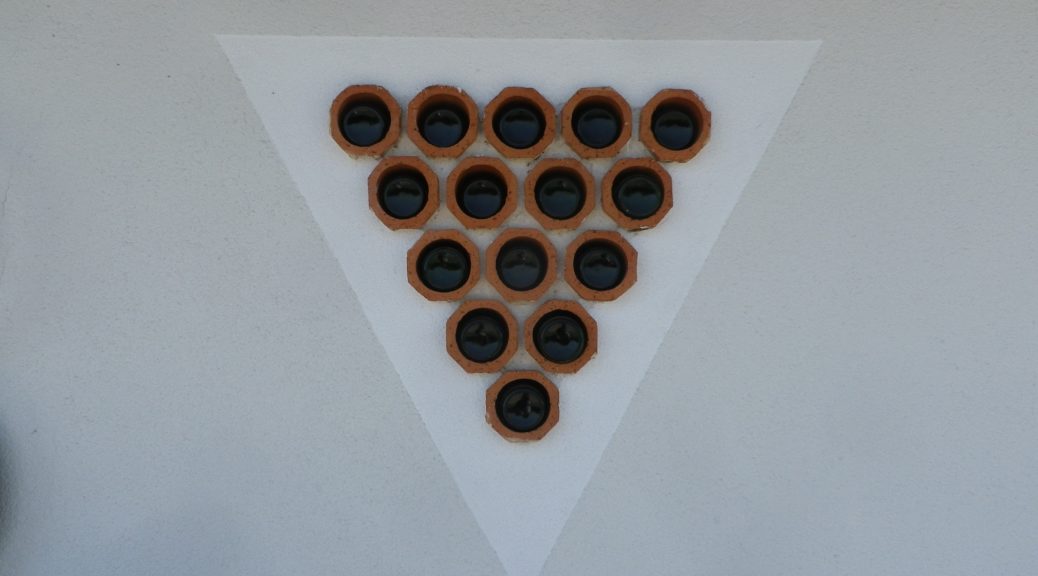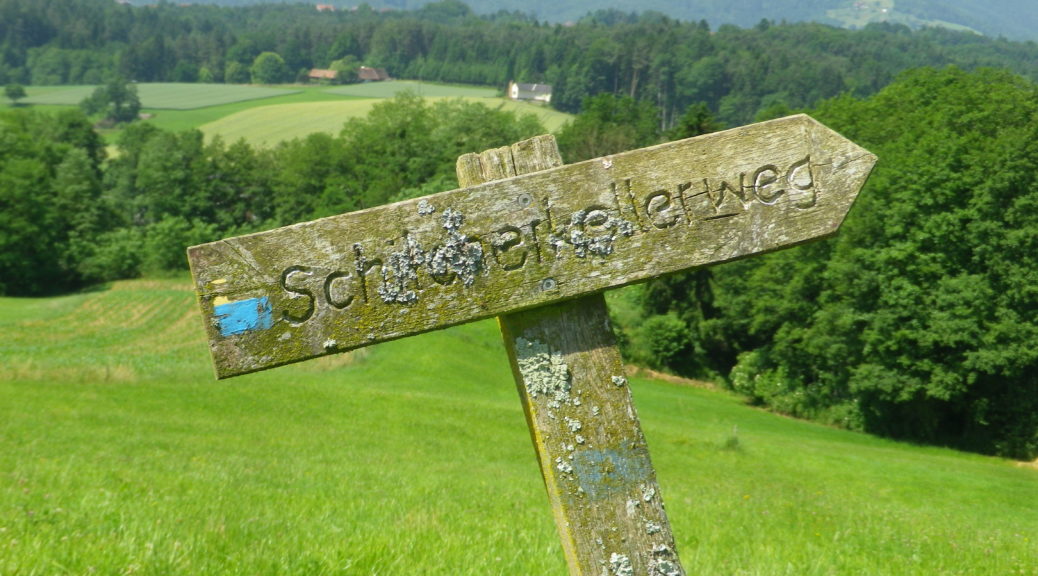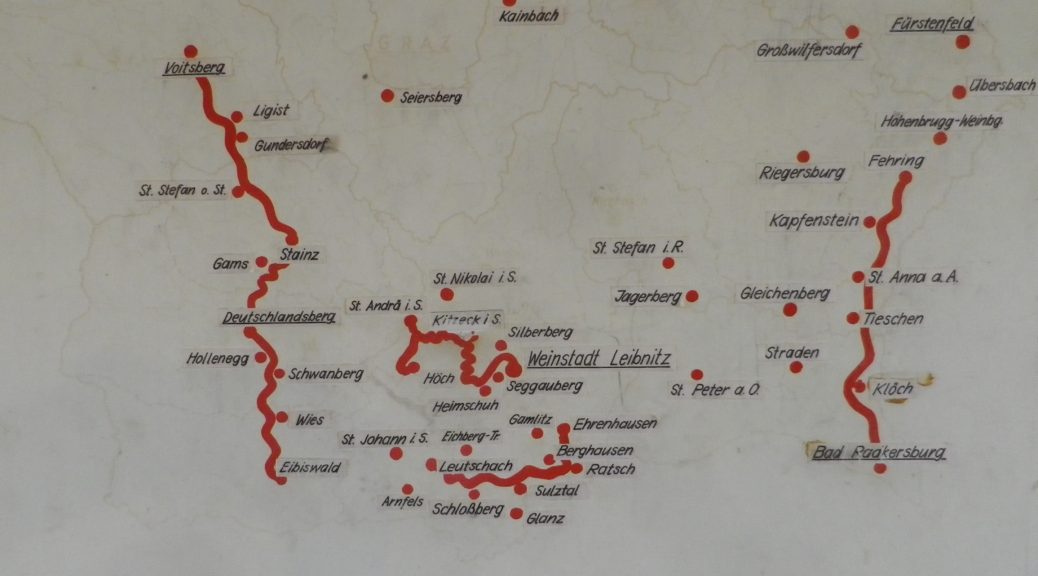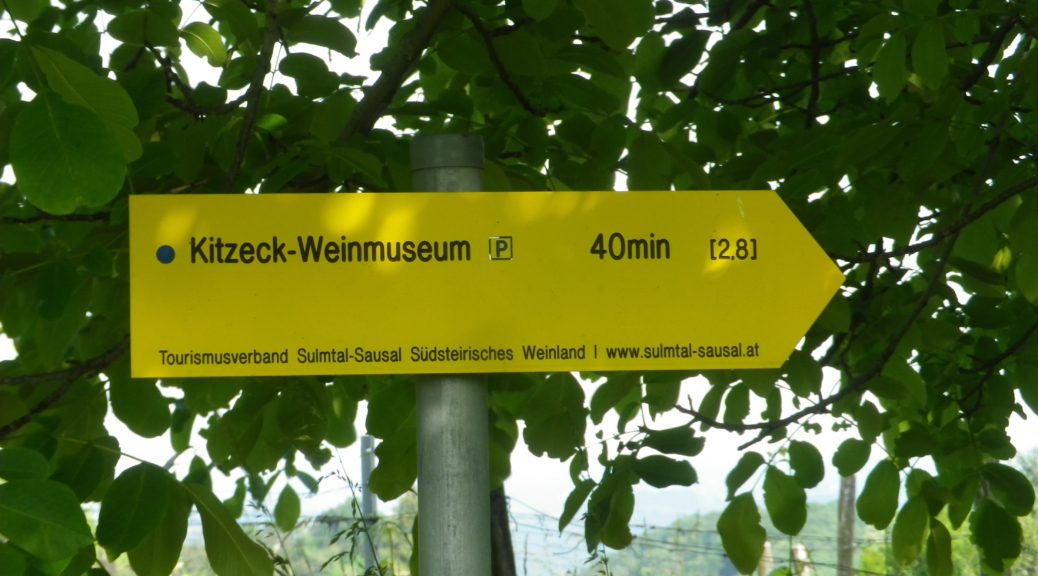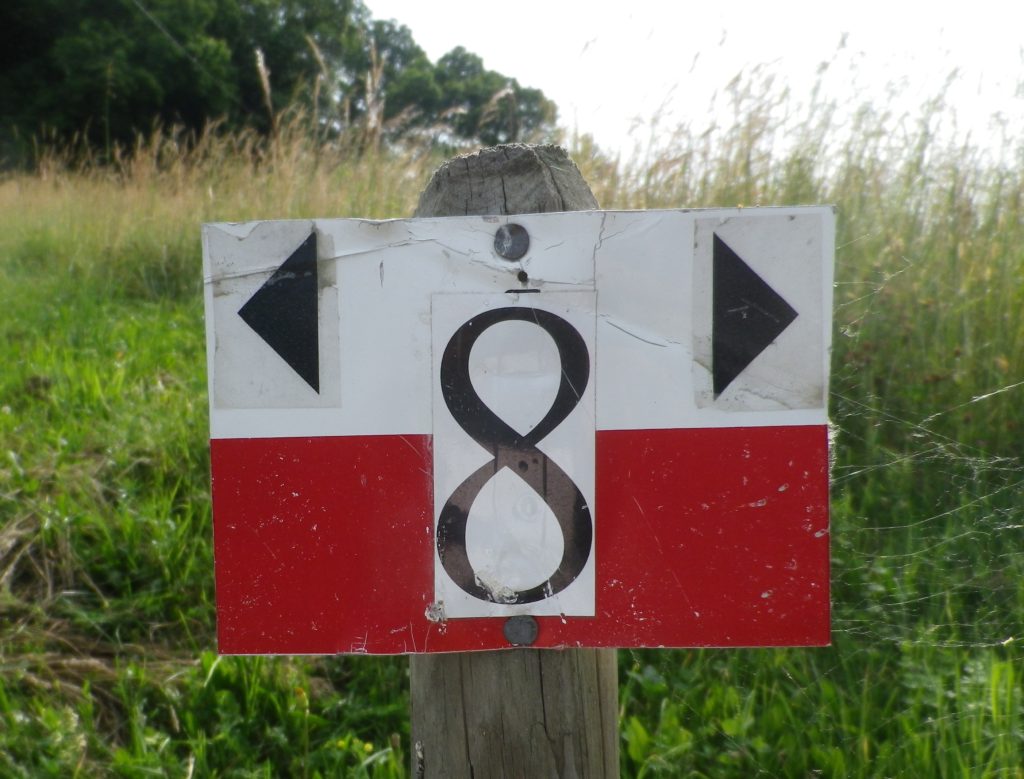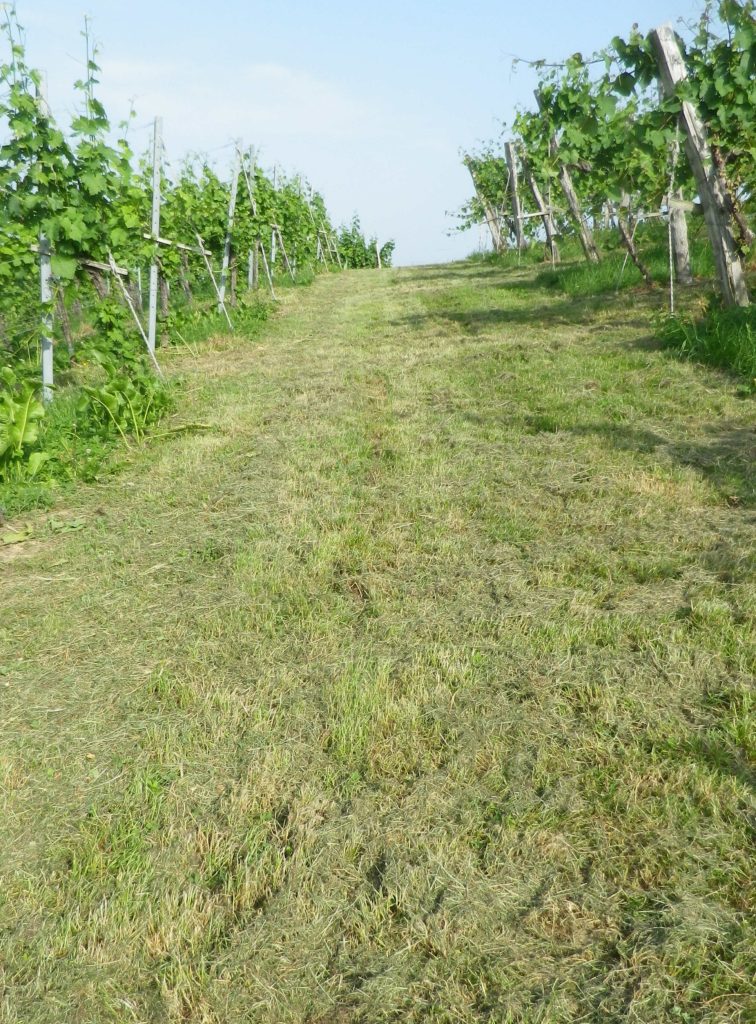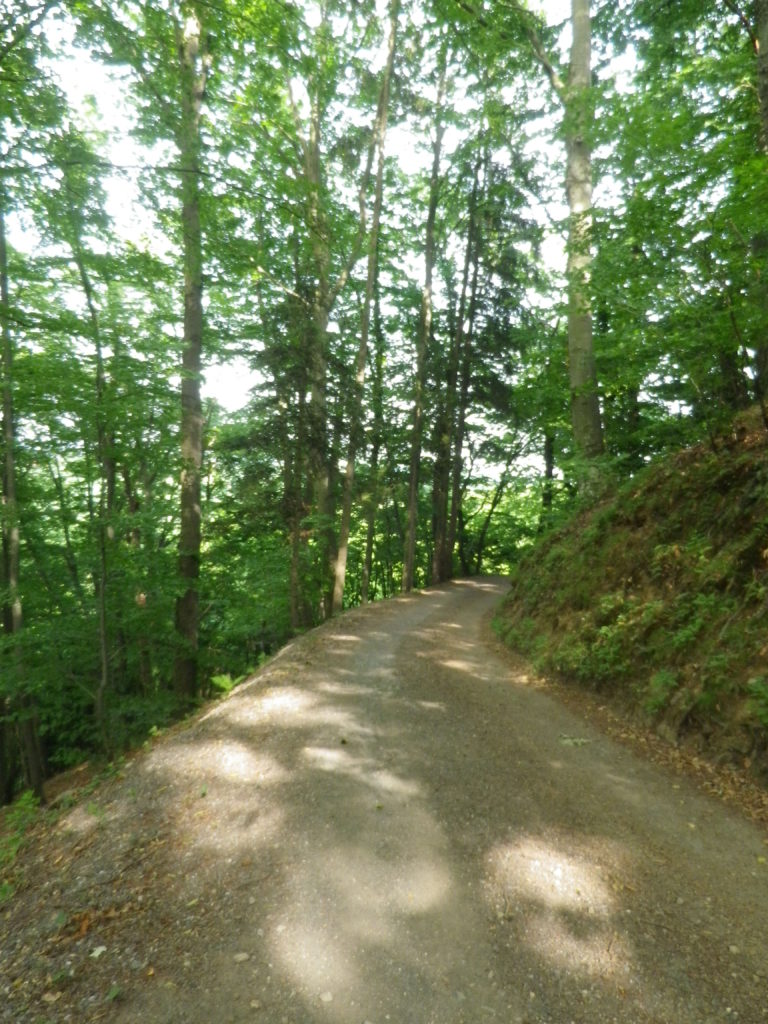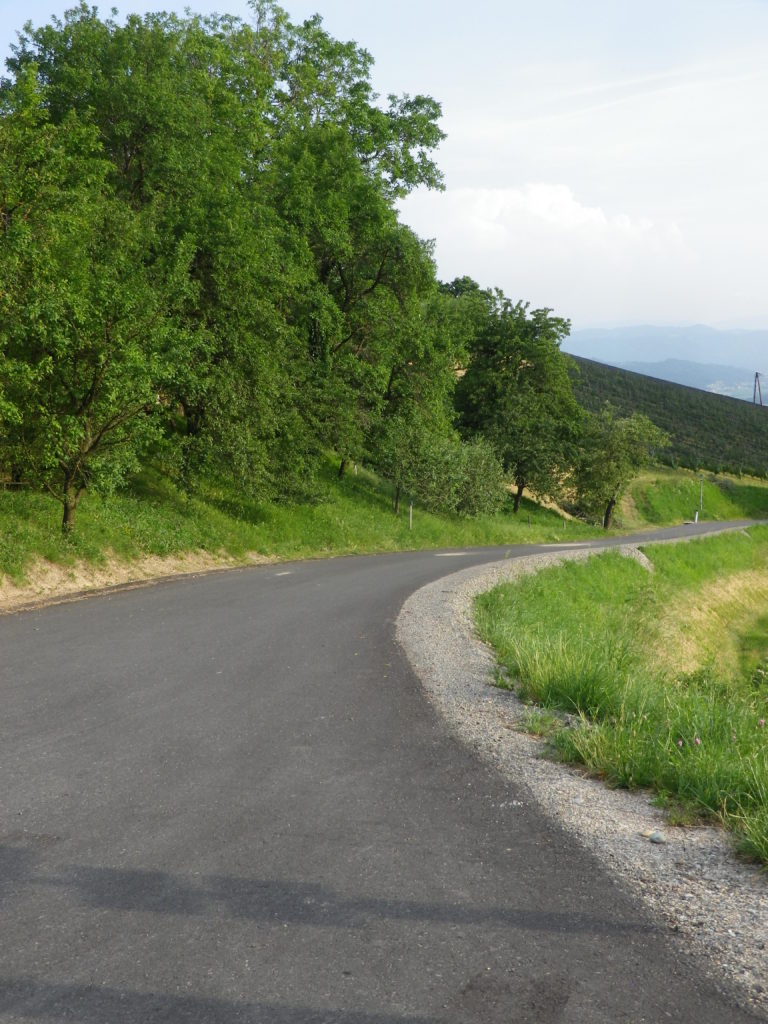The Steiermark is a wine region in the southeast corner of Austria. It is called Styria in English. The Steiermark lies just north of the Slovenian Alps, and east of the Austrian ones. Within this political and wine entity, there are three wine sub-regions. (See the red lines of the photo of the map above.)
-The easternmost, the Suedoststeiermark lies closest to Hungary, from where gets some of its climatic influences. Its topography is moderately hilly in most places, and as the name for one of its districts implies, was formerly covered by volcanos, hence the denomination name “Vulkanland”.
-Then there is the Weststeiermark. It is known by Austrian wine-lovers, and promoted by the local tourism industry, as Schilcher-land, home to a rose wine of the same name.
But this blog post is about the southernmost sub-region of the Steiermark, the Suedsteiermark. This relatively small sub-region shares a long border, as well as a tradition of viticulture, with Slovenia. Lying just north of the Slovenian border, it is located in very high hill region, if not a mountainous one, with steep sided slopes, interspersed with deep, narrow valleys. (Think roller-coaster ride, which it sure felt like in a car, and you have the general idea.) Kitzeck, one of the leading wine villages in Suedsteiermark, claims the distinction of being Europe’s highest wine village. The weather here, though, is similar to that of Tuscany. (Hence, it is sometimes referred to as the “Styrian Tuscany.”)
Viticulture in the Suedsteiermark focuses only on a few varietals, predominately white. Morillon, known as Chardonnay elsewhere, is grown here, and along with Sauvignon Blanc, and Pinot Blanc. These three varietals are readily recognized by most wine drinkers. However, two white varietals, and resulting wines, are rather unique to this area.
The Welschriesling (not related to Riesling at all), is a late ripening grape. Because of the Tuscan-like climate in this district, it can sometimes be harvested late for trockenbeerenauslese wines. This dried berry harvest occurs later than the regular harvest, when the berries literally dry up and shrivel on the vine before being picked. Therefore, these berries will produce a sweet wine when picked late, in spite of their natural acidity. Otherwise, the Welschriesling varietal produces a light, somewhat dry wine that is meant to be drunk young.
Another unusual variety and its wine is called Saemling. It is known as Scheurebe elsewhere in the Germanic wine-world. While it can be rather fruit-forward on the palate, it can also have a backbone of acidity to it. These wines will keep. It also makes a decent sweet wine.
What I Tasted
2018 Sauvignon Blanc, Qualitaetswein aus Oesterreich, Weingut Schneeberger (Heimschuh): A dry white wine with dark minus gold color, gooseberry and citrus nose, with flavors of the same; medium minus acidity.
2018 Welschriesling, Oesterreichischer Landwein, Weinbau Koschak (Kitzeck): An off-dry white wine with medium gold color; a tart green apple nose, with green and red apple flavors; medium acidity
2017 Welschriesling, DAC Suedsteiermark, Pichler-Schober (Mittereck/St Nikolai in Sausal): An off-dry white wine with medium minus gold color; a green apple and wet stone nose, with green apple and raw almond flavors; medium plus acidity, with a clean crisp finish.
